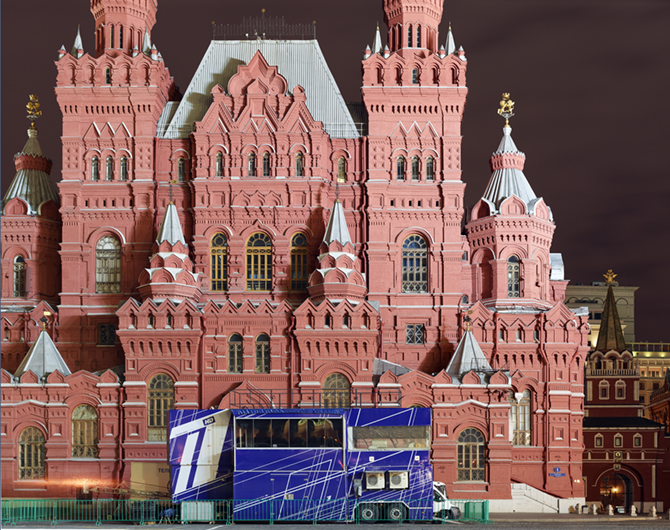LiveLab (Moscow) took place over the course of two weeks, July 2-16, 2019. I joined my Magnum colleagues Gueorgui Pinkhassov (Russian) and Alex Webb (American) to photograph 'modern Moscow and its inhabitants'. As we progressed, we edited and printed our work on-site at the Schusev State Museum of Architecture.
The work developed in real time, and LiveLab was open to the public throughout the period, offering the opportunity to observe the process of producing a freestanding body of work from start to finish. Our prints were mounted, framed and hung at the Museum of Architecture from July 16 until September 1, 2019, in a final exhibition curated by Nina Gomiashvilli.
This is the text which accompanied my part of the show:
"It is said that Moscow never sleeps. However, Mark Power's experience of the city belies this preconception. Working each night, between sunset and sunrise, he prowls the backstreets of our great metropolis, more likely to meet a scavenging rodent than another human.
"Power is fascinated by the way Moscow is illuminated during these nocturnal hours, and most particularly when lit randomly by the arc lights of a temporary building site or renovation project. Exquisite tableau emerge from the darkness, moments between moments, a stage awaiting its actors. But you'll find few of these places in a tourist guidebook; Power's Moscow appears surreal, ephemeral and sometimes sinister... but it is always beautiful.
"If you happen to encounter Power in the deep shadows of night, you might think he resembles a 19th-century photographer, his large format camera mounted on a heavy tripod, and probably under the darkcloth he lurks beneath in order to compose his pictures. His procedure is both slow and contemplative, encouraging an intimate relationship with his subject. The long exposures - often over a minute - allow the camera to record the myriad of mixed lighting sources one finds in any city (including vestiges of daylight from an apparently dark sky) which collectively produce a remarkable pallet of colour otherwise invisible to the naked eye."
